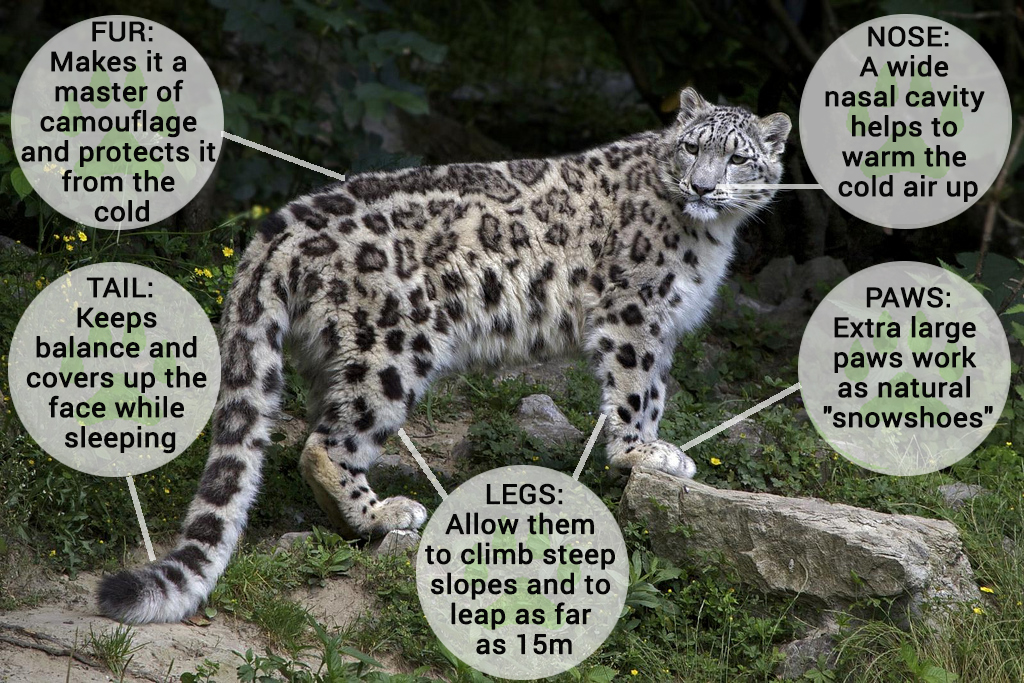snow leopard adaptations
The snow leopard (Panthera uncia) is an incredible example of adaptation to a harsh mountainous environment. Here are some key adaptations that help this majestic big cat thrive in its frigid habitat:
Physical Adaptations
-
Thick Fur: Snow leopards possess soft, dense fur that serves as insulation against severe cold. This fur is typically grayish-white with black rosettes, allowing them to blend in with their rocky and snowy surroundings, aiding both in temperature regulation and camouflage.
-
Large Paws: Their extra-large paws act like natural snowshoes, distributing their weight across a broader surface area, which prevents them from sinking into deep snow. This adaptation is crucial for their mobility in their snowy habitats (Snow Leopard Trust).
-
Body Structure: Snow leopards have stocky bodies with shorter forelimbs and longer hind limbs, facilitating movement and stability across steep terrains. Their flexible spine allows for greater agility and range of motion when climbing and navigating rocky outcrops (Rolling Hills Zoo).
-
Small Ears: Their rounded, small ears help minimize heat loss, which is essential when they are exposed to extremely cold temperatures. Additionally, they can flatten their ears against their heads to reduce noise and remain stealthy while stalking prey (WorldAtlas).
-
Nasal Structure: Snow leopards have wider nasal cavities compared to other big cats, which enable them to take in more oxygen in their high-altitude environments. This adaptation is vital for sustaining their energy levels during physical exertion, such as climbing or hunting.
Behavioral Adaptations
In addition to their physical adaptations, snow leopards have developed behaviors that enhance their survival:
- Stealth and Stalking: Their camouflage and ability to flatten their ears allow them to approach prey with minimal detection. This is particularly important when hunting in steep, rocky terrains.
These adaptations combine to make the snow leopard a proficient hunter and survivor in one of the most challenging habitats on Earth. You can learn more about these adaptations by visiting resources like National Geographic Kids and Potter Park Zoo.
Sources


Related Questions
Work fast from anywhere
Stay up to date and move work forward with BrutusAI on macOS/iOS/web & android. Download the app today.
